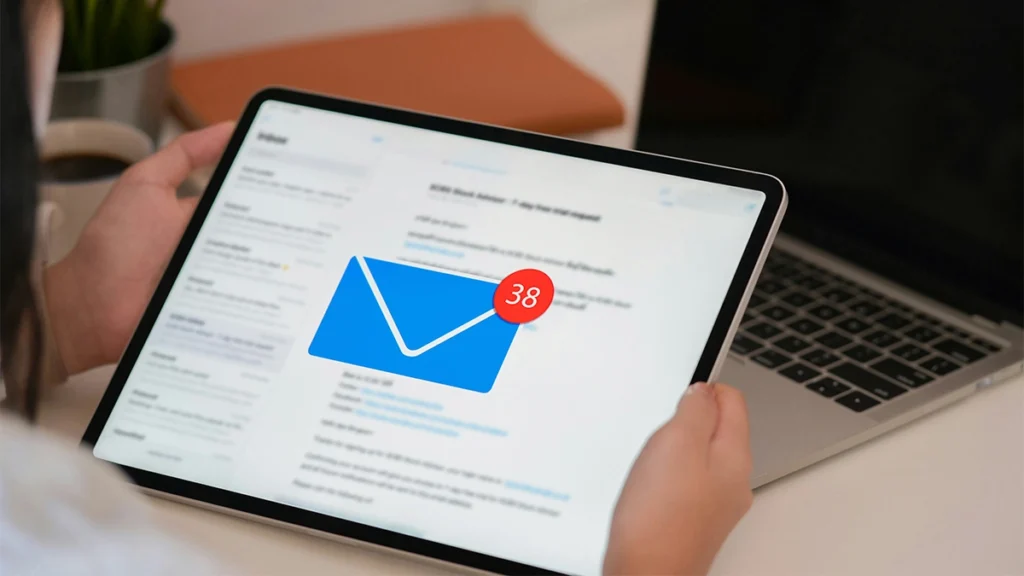Email marketing remains one of the most effective digital marketing channels for small businesses and startups. It’s affordable, versatile, and direct – allowing you to reach customers in their inbox without relying too heavily on algorithms or paid ads.
However, sending emails is only half the battle. To get real value, you need to track email marketing metrics that show whether your campaigns are working or need improvement.
In this guide, we’ll break down the key metrics you should monitor, explain what they mean, and show you how to use them to improve your email marketing results.
Why Measuring Email Marketing Matters
If you’re just starting out, email marketing can feel straightforward: write an update, send it out, and wait for responses. But without tracking results, you’re essentially guessing.
Metrics give you visibility. They tell you if people are opening your emails, clicking your links, or unsubscribing. They also reveal whether your subject lines are effective, if your content resonates, and if your emails are contributing to actual business growth.
By measuring email performance, you can:
- Identify what’s working and double down on it.
- Spot weak areas and test improvements.
- Allocate time and budget more effectively.
- Build stronger relationships with your audience.
Put simply: without tracking email marketing metrics, you won’t know whether your efforts are helping your business grow.
The Key Email Marketing Metrics Small Businesses Should Track
Let’s look at the most important metrics to measure.
- Open Rate
- Click-Through Rate (CTR)
- Conversion Rate
- Bounce Rate
- Unsubscribe Rate
- List Growth Rate
- Delivery Rate
- Engagement Over Time
- Revenue Per Email (If Applicable)
1. Open Rate
Your open rate shows the percentage of recipients who opened your email. It’s one of the first indicators of success because if people aren’t opening your emails, they won’t see your message at all.
How to calculate:
Open rate = (Number of opens ÷ Number of delivered emails) × 100
Why it matters:
A high open rate usually means your subject line is strong and your sender name is trusted. A low open rate can suggest your subject line is weak, your audience isn’t engaged, or your emails are ending up in spam folders.
Benchmarks for small businesses:
Average open rates vary by industry, but many small businesses should aim for 20–30%.
Tips to improve:
- Write clear, benefit-driven subject lines.
- Personalise the subject line (e.g. using first names).
- Test different send times to see when your audience is most responsive.
2. Click-Through Rate (CTR)
The click-through rate shows how many people clicked a link within your email.
How to calculate:
CTR = (Number of clicks ÷ Number of delivered emails) × 100
Why it matters:
While the open rate tells you if people looked at your email, CTR tells you if they took action. It shows whether your content is engaging and whether your call-to-action (CTA) is compelling.
Tips to improve:
- Use one clear CTA rather than overwhelming readers with options.
- Place links and buttons where they’re easy to find.
- Write benefit-driven copy around your CTAs.
3. Conversion Rate
Conversion rate tracks how many recipients completed a desired action after clicking a link in your email – for example, making a purchase, booking a call, or signing up for an event.
How to calculate:
Conversion rate = (Number of conversions ÷ Number of clicks) × 100
Why it matters:
Conversions are the ultimate measure of whether your email is driving business results. High conversions mean your content and offers resonate. Low conversions may suggest a disconnect between the email and the landing page.
Tips to improve:
- Ensure your landing pages match the promise of your email.
- Keep the path to conversion simple – fewer steps lead to more action.
- Segment your audience so people receive offers most relevant to them.
4. Bounce Rate
Bounce rate shows the percentage of emails that couldn’t be delivered.
Two types of bounces:
- Soft bounces: temporary issues (e.g. inbox is full).
- Hard bounces: permanent issues (e.g. invalid email address).
Why it matters:
A high bounce rate can damage your sender reputation, meaning future emails may be blocked or marked as spam.
Tips to improve:
- Clean your email list regularly.
- Use double opt-in so subscribers confirm their email address.
- Avoid purchasing email lists – they often contain invalid addresses.
5. Unsubscribe Rate
Unsubscribe rate shows how many people opt out of your emails after receiving one.
Why it matters:
It’s natural for some people to unsubscribe, but consistently high rates may mean your emails are irrelevant, too frequent, or poorly targeted.
Tips to improve:
- Set clear expectations when people sign up (e.g. weekly tips, monthly updates).
- Segment your audience so people only get emails relevant to them.
- Focus on delivering value in every message.
6. List Growth Rate
This metric measures how quickly your email list is growing.
How to calculate:
List growth = (New subscribers – Unsubscribes – Bounces) ÷ Total list size × 100
Why it matters:
Even the best list will naturally shrink over time as people unsubscribe or change addresses. Tracking growth ensures you’re attracting enough new subscribers to balance this out.
Tips to improve:
- Add sign-up forms to your website and social media.
- Offer lead magnets such as free guides, checklists, or discounts.
- Make it easy to share your emails with a “forward to a friend” option.
7. Delivery Rate
Your delivery rate shows the percentage of emails that were successfully delivered (i.e. not bounced).
Why it matters:
A low delivery rate signals problems with your email list or sender reputation.
Tips to improve:
- Use a reputable email service provider.
- Monitor bounce rates closely.
- Maintain good list hygiene.
8. Engagement Over Time
Beyond single campaign metrics, it’s useful to track engagement trends over time. Are open rates improving? Are unsubscribes increasing?
Why it matters:
Looking at long-term trends gives you a clearer picture of whether your email strategy is moving in the right direction.
9. Revenue Per Email (If Applicable)
For businesses selling online, revenue per email is a powerful metric. It shows the actual return you’re getting from each campaign.
How to calculate:
Revenue per email = Total revenue from campaign ÷ Number of delivered emails
Why it matters:
This metric helps you connect email marketing activity to financial results – essential for small businesses managing tight budgets.
How to Track Email Marketing Metrics

Most email platforms – like Mailchimp, MailerLite, and MailPoet – provide built-in dashboards for these metrics. If you want to go further, connect your email campaigns to Google Analytics to track on-site behaviour, conversions, and revenue.
For startups and small businesses, start simple. Focus on open rate, CTR, and unsubscribes. As you grow more confident, layer in more advanced metrics such as conversion rates and revenue tracking.
Using Metrics to Improve Your Email Marketing
Tracking email marketing metrics is only valuable if you act on the data. Here’s how to use your findings to improve:
- Test subject lines to lift open rates.
- Experiment with CTAs to boost clicks.
- Segment your audience to make emails more relevant.
- Optimise landing pages to increase conversions.
- Adjust sending frequency to reduce unsubscribes.
Remember: improvement comes from small, consistent tweaks rather than big overhauls.
Common Mistakes Small Businesses Make with Email Metrics
- Focusing on vanity metrics only. Open rates look nice, but they don’t pay the bills. Balance them with conversions and revenue.
- Ignoring trends. One bad campaign isn’t a disaster, but consistent decline needs attention.
- Not cleaning lists. Holding on to inactive subscribers drags down results.
- Sending without testing. Skipping A/B testing means missing opportunities for quick wins.
Final Thoughts
Email marketing is a powerful channel for small businesses and startups, but success isn’t about sending more emails – it’s about sending better ones. By monitoring the right email marketing metrics, you’ll gain insights that help you write stronger subject lines, create engaging content, and generate real business results.
Start by tracking open rates, click-through rates, and unsubscribes. As your confidence grows, focus on conversions, list growth, and revenue. With steady improvements, you’ll turn email from a background task into a key driver of your business growth.


